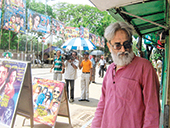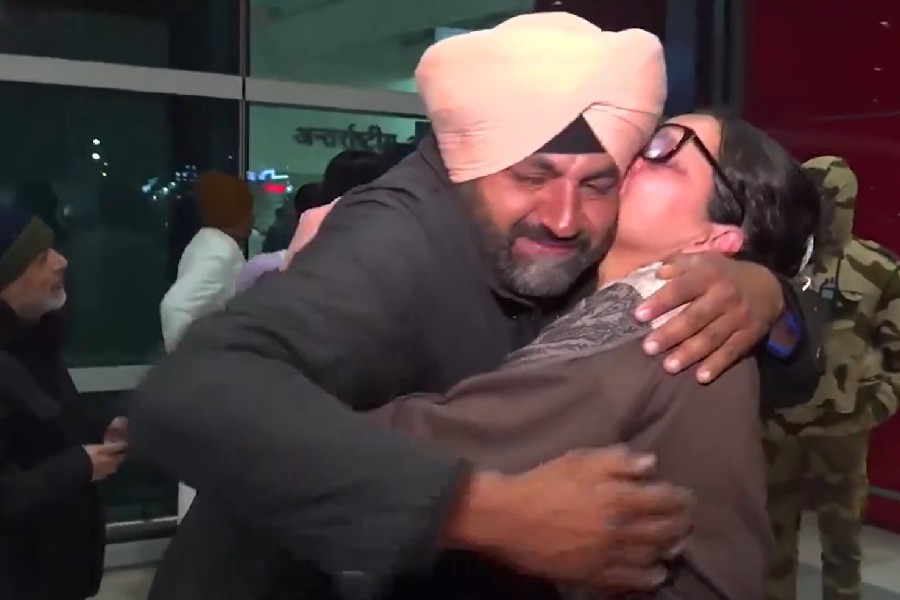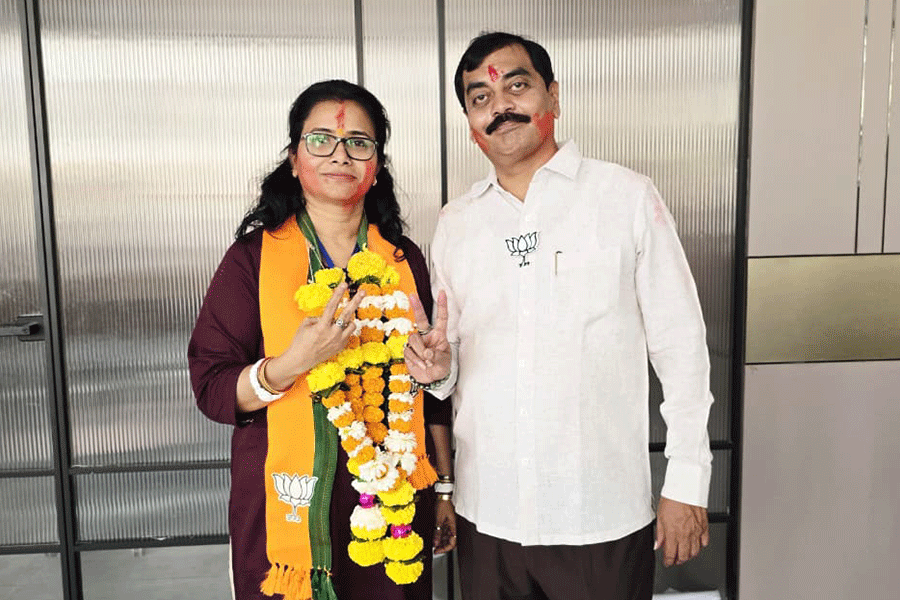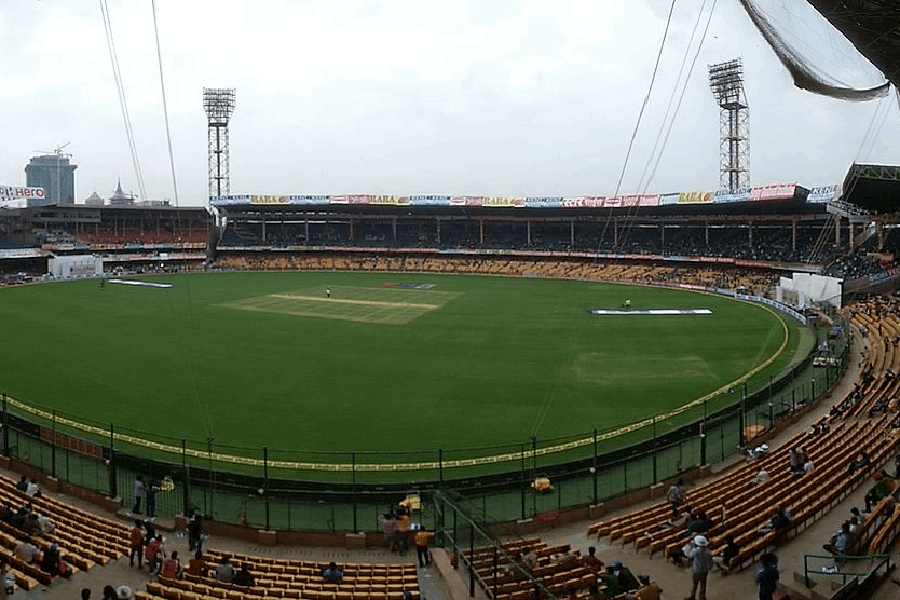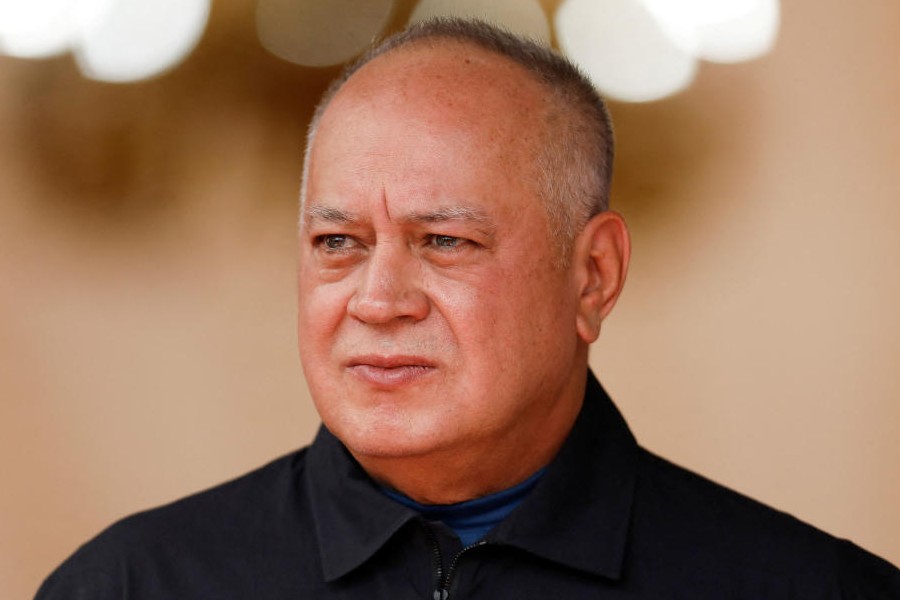 |
| Bibhas Chakraborty during the shooting of the film |
The writer writes a scene on a piece of paper with a pen but out here I have to create that scene with a hundred different pens…,” remarks Bibhas Chakraborty in a documentary Anya Ek Theatre, that was screened at 7.30pm on September 30 at Sisir Mancha.
Just past his 75th birthday, Bibhas Chakraborty remains one of the finest director-actors of the Bengali stage. His ideas on theatre production, light, sets, sound and music design, his views on acting and ways of conducting a theatre unit and his political, philosophical and aesthetic ideals are the subject of this documentary by Ladly Mukhopadhyay. The documentary took over one-and-a-half years to make.
“There are no usual celebrity quotes because Bibhasda is such a brilliant speaker and I felt this was the best way to preserve his legacy. I have seen Sambhu Mitra and Utpal Dutt act but there are many who have only heard of them,” says Mukhopadhyay. “Documentation of theatre is so woefully inadequate... there exists nothing of Chakraborty’s early roles in Nandikar productions under Ajitesh Bandyopadhyay or his most talked-about directorial ventures like Narak Guljar, Rajrakta, Panchu O Mashi, Mahakalir Bachcha... a couple of stills of very poor quality may be found but that is all.”
A cinematographer with over 200 documentaries to his credit (including one on Sambhu Mitra), Ladly has made this one “as colourful as possible”. There are reconstructions of earlier plays like Chak Bhanga Madhu and recordings of more recent works like Srinwantu Comrades, Nakchhabita and Hamlet.
Born in Sylhet on September 23, 1937, Bibhas Chakraborty’s early years were impacted by the tension of a possible Japanese attack through the nearby Burma border. He attended literary conferences where he came to see and know the three Bandyopadhyays, Manik, Tarashankar, Bibhutibhushan, and others. Bibhas’s years in Presidency brought him into contact with a new cinema and a new theatre.
A disappointing stint at Bohurupee brought him to Ajitesh’s Nandikar. From here, too, he broke away to form Theatre Workshop, where he spent 19 years, and finally established Anya Theatre, where he continues his quest for a new theatre language.
Fest & funds
A “huge backlog of expectations,” a theatre community badly scarred by the “amra-ora” discriminations made by the last government and funds that are scanty — these are problems the new Natya Akademi committee was trying hard to brush aside as it launched its first celebrations (September 25 and 26) to mark its silver jubilee year. “Only if all theatrical activity, all groups and individuals can be brought under the umbrella of the Natya Akademi can it truly represent theatre in Bengal,” said Manoj Mitra, the Akademi president.
The Akademi instituted a Badal Sircar Memorial Lecture. On September 25, Shamik Bandyopadhyay delivered what was a sensitive summation of Sircar’s creative career. Gautam Haldar presented an animated narration of Tarashankar Bandyopadhyay’s Tarini Majhi.
The fare on September 26 at Rabindra Sadan left a lot to be desired. The line-up was such that there was no time left for what would undoubtedly have been an exceptional presentation of Manoj Mitra’s play Ashwatthama read by Bibhas Chakraborty, Manoj Mitra and Surajit Bandyopadhyay. The only performance that lingered on was a narration of Little Thespian’s Suyion Wali Bibi by contemporary Urdu writer Iqbal Majid. Directed by Uma Jhunjhunwala with light design by Joy Sen, this was a visual treat involving some 15 characters, though the use of lighted candles was perhaps avoidable.

